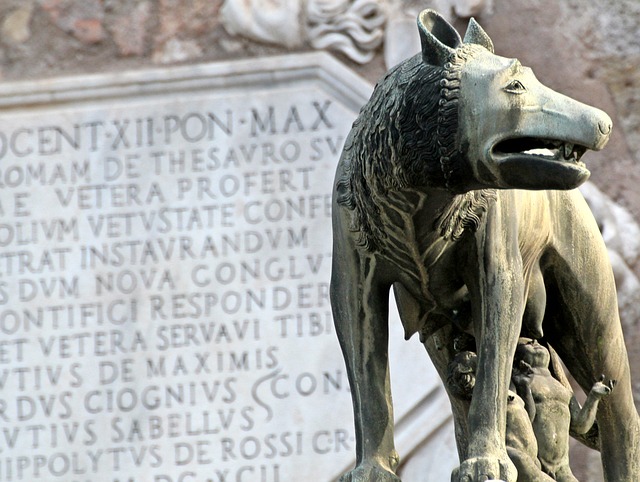Bastions in an Urban context in Late Roman Britain
(previously published in Had Soc newsletter autumn 2014)
Following from my session on the ‘Context of the Forts of the Saxon Shore’ at this year’s Roman Army School, my interest has been aroused by the presence of bastions appearing on urban sites in Late Roman Britain. Even in a military context, they had a very limited distribution, and their significance is not well understood.
Since the term ‘bastion’ has medieval connotations, the structures in question as found in Roman Britain are better described as U-shaped towers, wholly projecting externally but affixed to walls. Other shapes, which can also straddle the walls – square, circular, and fan-shaped are plentiful across the Empire, with two examples of polygonal towers in Britain at Risingham and York.
Dating bastions in a military context is problematical, but they are generally held to be within the period of the Tetrarchy through the house of Constantine – (284-350).
(Lander 1984, 198). The purpose was to provide added height and forward distance from the wall to allow defenders to gain advantage over attackers trying to scale or breach the wall (Johnson 1983, 38). In Roman Britain, it does not appear to have been thought necessary to add bastions to existing forts. It is only with the building of new forts, primarily along the ‘Saxon Shore’ in south-east Britain, in the late third century that bastions appear as part of the initial build.
In contrast, a number of already-walled towns started to have bastions added, from about the mid-fourth century. Crickmore (1984) listed some nineteen where at least one bastion is known, plus another three possibles. None have survived in entirety, but at Chichester in Sussex, six are still visible; another ten are known from various interventions, and up to yet another ten are suspected. In a recent publication (Westman 2012) an attempt has been made to quantify the effort required to achieve this. Based on 150 workable days in a year, 240 animals, and an indeterminate workforce, a resulting estimate of some 6000 tons of material over a period of around six years is suggested. This would have made the town the most heavily defended outside London. It is a commonplace that the addition of projecting towers to town walls was to carry defensive artillery (Frere, 290). However, with reference to the siege of Amida in AD 359, it was recorded (AM 19.5.2) that two legions of the defenders newly brought from Gaul were “not merely unsuited but actually a great hindrance…..of no help with the artillery”. This suggests that trained personnel would be required to man them, in addition to necessary ongoing maintenance. It is perhaps more likely that archers would be placed on the towers.
As part of the ‘system’ of bastions, it has often been quoted in standard works (eg. Frere 1978, Faulkner 2000) that as a consequence, the earlier narrow double ditches were replaced by a single broad ditch further from the wall. This would provide a more satisfactory ‘killing zone’ if artillery was mounted on the bastions. After some investigation, the origin of this statement has been found to come from a paper on the defences of Great Casterton (Corder 1955), which has then been used as a basis for possibilities at other sites. As Chichester was one of these sites, the local archaeological society (CDAS) was able to conduct a geophysical survey earlier this year on an open expanse of grassland outside the south-west part of the walls. Initial analysis of results do show an anomaly where such a later broad ditch might be expected. However, further work will be required to verify this, possibly auguring followed by excavation.
Paradoxically, at the time when the defences were being augmented, civilian activity within the walls seems to have declined. However, traces of a possible late ‘high status’ building has been recently discovered in the Bishop’s Palace gardens in the south-west quadrant of the city. I have tentatively suggested that the function of Chichester changed in the Late Roman period from what is usually termed a ‘Civitas capital’ to a more heavily fortified regional strong point, possibly even for use by the Field Army. At a recent conference, I had the opportunity to discuss this with Professor Martin Biddle, who, not only agreed, but in his forword to the recently published report on Sparsholt Roman Villa (Johnston & Dicks 2014), committed into print his similar view with regard to Late Roman Winchester.
So, the addition of bastions to civilian defences in Late Roman Britain, appears to have been relatively selective, and as yet, the significance and practical purpose is something of a mystery. Perhaps it lay, either with the determination and resources of certain communities to protect their way of life, or was it an initiative from Provincial level?
Bibliography
AM (Ammianus Marcellinus). trans. Rolfe, J.C. 1935-1939. London. Heinemann.
Corder, P. 1955. The Reorganisation of the Defences of Romano-British. Journal of the Royal Archaeological Institute. Vol. 112, 20-42.
Crickmore, J. 1984. Romano-British Urban Defences. BAR 126. 72-95. BAR Oxford.
Faulkner, N. 2000. The Decline and Fall of Roman Britain. Stroud. Tempus.
Frere, S.S. 1978 edition. Britannia. London. Routledge & Kegan Paul.
Johnson, S. 1983. Late Roman Fortifications. London. Batsford.
Johnston, D.E. & Dicks, J. 2014. Sparsholt Roman Villa, Hampshire. Hampshire Field Club & English Heritage.
Lander, J. 1984. Roman Stone Fortifications. BAR S206. BAR Oxford.
Rogers, A. 2011. Late Roman Towns in Britain. Cambridge. CUP.
Westman, A. 2012. Chichester City Walls. 50-59. London. Museum of London Archaeology.
Richard Bridgland
